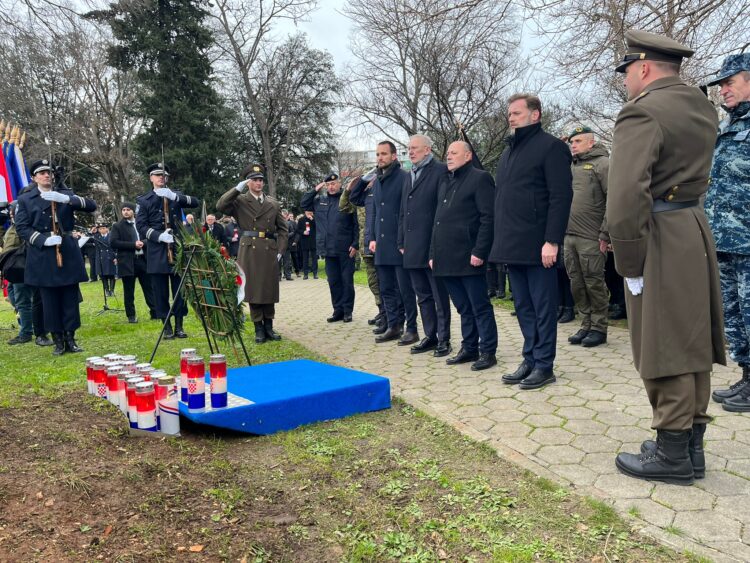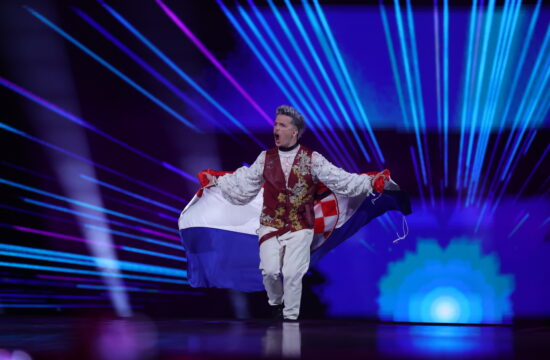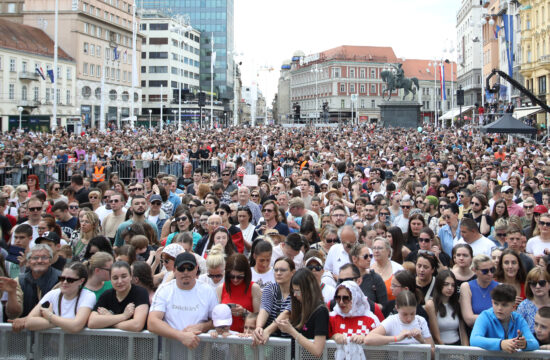
The marking of the 30th anniversary of Operation Maslenica, the first big liberation operation in the Homeland War, began in the coastal city of Zadar on Saturday with wreath-laying ceremonies. Pročitaj više
Among those honouring the killed defenders at the Zadar cemetery were Veterans Minister Tomo Medved, Interior Minister Davor Bozinovic, Defence Minister Mario Banozic, Regional Development and EU Funds Minister Sime Erlic, Social Democratic Party president Pedja Grbin, General Ante Gotovina, participants in the operation, the families of killed defenders, veterans, and delegations from many towns and counties.
A commemoration will be held at the city’s Croatian National Theatre, attended by Prime Minister Andrej Plenkovic, Medved, Bozinovic, Banozic, Erlic, Foreign Minister Gordan Grlic Radman, and Justice Minister Ivan Malenica.
Operation Maslenica, launched in the early hours of 22 January 1993 by Croatia’s military and police forces, was successfully completed in 72 hours and once again connected Croatia’s north and south, while the enemy was faced with its first major defeat.
“Until Operation Maslenica, we mostly defended ourselves, more or less successfully, but Maslenica marked a turning point in the Homeland War, and then for the first time the three branches of the military, the special police, the Navy and the Air Force and the ground forces, which were the bearer of that action, participated ” General Ante Gotovina has said.
The operation was planned in secret under the code name Gusar. In just 72 hours about a hundred square kilometres were liberated, from the hinterland of Zadar with Novsko Zdrilo and part of Velebit and the area around the Peruca Hydroelectric Power Station near Sinj.
Bobetko was commander, Gotovina and Roso his deputies
General Janko Bobetko commanded the military and police operation, and his assistants were then brigadiers Ante Gotovina and Ante Roso.
The Croatian army and police started combat operations from several directions and already on the first day Rovanjska, Maslenica, Novsko Zdrilo, Podgradina, Islam Latinski, Islam Grcki and Kasic were liberated. In the following days, Zemunik Airport and many places in the hinterland of Zadar were liberated.
Taking control of the wider area of Velika and Mala Bobija, Tulove Grede and Mali Alan, key positions on Mount Velebit from which Croatian forces could monitor Obrovac, Gracac and Benkovac, was strategically extremely important. Until the end of the operation, the entire area of the so-called pink zone in the hinterland of Zadar was liberated and the strategically important area of Novsko Zdrilo was secured.
One of the special features of Operation Maslenica was the participation of the guard brigades, the 4th brigade was the leader, and parts of the 1st, 2nd, 3rd and 9th brigades participated. All of them contributed to the success of the operation and keeping the achieved combat positions, although some of them were only being founded.
On Mount Velebit, special police forces also acted in a coordinated manner, conquering the dominant elevations and communications, and the reserve brigades of the Croatian Army also contributed significantly.
Attempt to destroy Peruca power plant
The best Croatian forces participated in Operation Maslenica and the best opposing Serbian forces. Arkan’s Tigers, Captain Dragan’s Knindze and Nis special forces arrived to help the Krajina leader Milan Martic, and Ratko Mladic’s military units arrived from Bosnia and Herzegovina.
Although the main objectives of the operation were achieved very quickly, due to the pressure of the international community, on 25 January, near Obrovac and Benkovac, the Croatian advance was stopped.
The enemy used this to strengthen their forces and counterattack, so the fighting lasted for several more days.
The Croatian forces, reinforced by troops transported by helicopter from Slavonia, maintained the front lines they had reached. It was the first helicopter landing of Croatian Army units, and the enemy, who suffered the biggest defeat so far, threatened on 27 January to demolish the dam of the Peruca Hydroelectric Power Plant.
Despite the activation of 30 tons of explosives, the damaged dam did not give way, and the Croatian Army prevented the enemy’s advance and soon took control of the entire area.
A pontoon bridge connected the north and south of the country
Since Novsko Zdrilo was brought back under the control of Croatian forces in Operation Maslenica, a pontoon bridge was built in the same place where the Maslenica bridge was demolished in November 1991. The pontoon bridge was under constant enemy fire until the final liberation of Zadar’s hinterland in Operation Storm in 1995.
The pontoon bridge enabled traffic between the north and the south until the construction of the new Maslenica Bridge, for which then-President Franjo Tudjman laid the foundation stone on 30 January 1993.
The fighting in Operation Maslenica lasted until the end of March, and 127 Croatian defenders were killed during and in the aftermath of the operation. The biggest tragedy was experienced by the 3rd Guards Brigade “Kune”, which lost 24 members in the defense of Kasic on 1 February.





Kakvo je tvoje mišljenje o ovome?
Budi prvi koji će ostaviti komentar!